The Channels panel lets you view and edit the image in separate channels. Channels are halftone images providing information about the brightness of color components. The channel list contains a composite image, color mode channels (RGB, CMYK, Lab, Grayscale), the transparency channel of the current raster layer (alpha channel), current selection channel, and the active layer mask channel. Each channel in the palette corresponds to a thumbnail image that displays all changes made to this channel.
You can adjust the size of thumbnails by clicking the button ![]() at the top of the Channels panel.
at the top of the Channels panel.
 Channels Panel for CMYK
Channels Panel for CMYK
The active (editable) channel is highlighted with a dark gray background in the list. To select another channel, click its name. When selecting a single channel, the image is shown as grayscale.
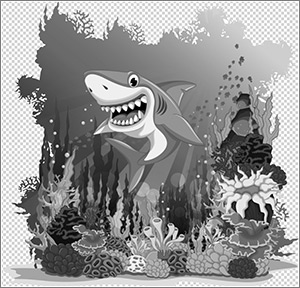 Displaying Green Channel
Displaying Green Channel
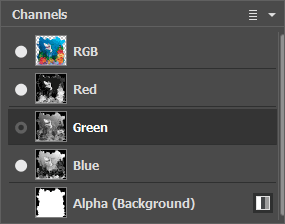 Green Channel is Selected
Green Channel is Selected
The visibility icon next to the inactive channel means that this channel is shown in the Image Window but is not editable. If several channels are visible, the image is displayed in color.
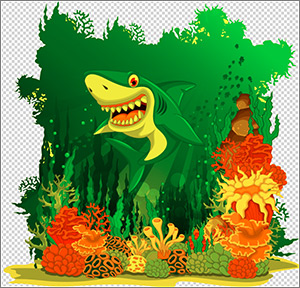 Displaying Green & Red Channels
Displaying Green & Red Channels
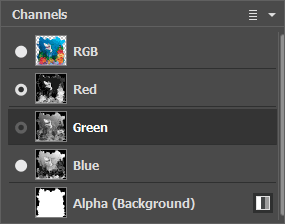 Green & Red Channels are Selected
Green & Red Channels are Selected
If you select the composite channel, all component channels become visible and active. The composite image is always located at the top of the list and is selected by default.
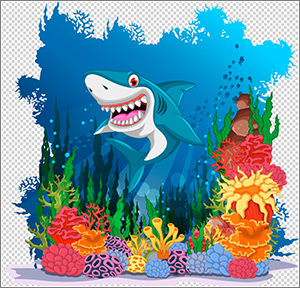 Displaying All Color Components
Displaying All Color Components
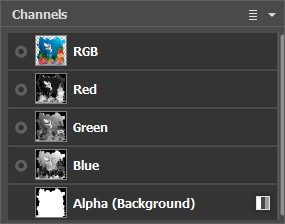 RGB Channel is Selected
RGB Channel is Selected
To edit a channel, use the usual drawing tools. Painting on a channel with white results in 100% intensity of the corresponding color. Different shades of color result in varying color intensity. The black color completely removes a color channel.
In the Alpha channel, by default, opaque areas are shown in white, transparent areas in black, and semitransparent areas in gray.
You can adjust the view mode for the alpha channel in the pop-up menu: Grayscale, Trimap, or Highlighted in Red.
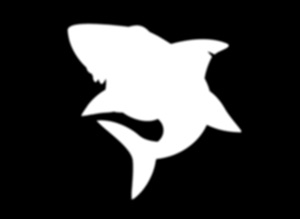 Grayscale
Grayscale
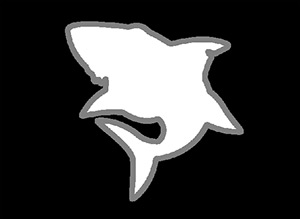 Trimap
Trimap
Right-click the alpha channel to open the context menu with the following commands:
Clear Alpha Channel fills the alpha channel with white, and the layer has no transparent areas;
Add Alpha Channel to Selection combines the alpha channel with the selection or creates a selection from the alpha channel;
Subtract Alpha Channel from Selection removes the alpha channel from the selection channel;
Intersect Alpha Channel with Selection creates an intersection of the alpha channel and the selection channel.
The Mask channel displays the current layer mask, if available: black marks protected areas, white marks unprotected areas, gray marks the transition zone. The mask channel has 6 view modes.
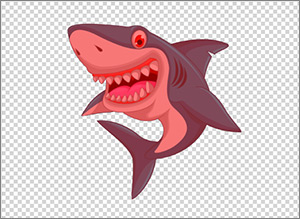 Highlighted in Red
Highlighted in Red
 Inverted Red
Inverted Red
Right-click the mask channel to open the context menu with the following commands:
Remove Mask deletes the current layer mask;
Invert Mask inverts the selected mask;
Apply Mask merges the mask with the layer;
Add Mask to Selection adds the unprotected area of the chosen mask to the selection;
Subtract Mask from Selection removes the unprotected area of the chosen mask from the selection;
Intersect Mask with Selection creates a selection that includes common parts of the selection and the unprotected mask area.
The Selection channel indicates the area of the current selection: white marks selected areas, black marks unselected areas, gray marks the transition zone. For this channel, 6 view modes are available.
 Black Background
Black Background
 White Background
White Background
Right-click the selection channel to open the context menu with the following commands:
Deselect cancels the selection;
Invert reverses the selection;
Reveal Selection adds a mask which hides everything but selected parts of the layer;
Hide Selection adds a mask hiding the selected area.
View Modes:
You can change the displaying of contents of the alpha, mask, and selection channels in the Image Window by clicking the icon to the right of the channel's name and choosing from the options:
![]() - Grayscale,
- Grayscale,
![]() - Trimap,
- Trimap,
![]() - Highlighted in Red,
- Highlighted in Red,
![]() - Inverted Red,
- Inverted Red,
![]() - Black Background,
- Black Background,
![]() - White Background.
- White Background.
